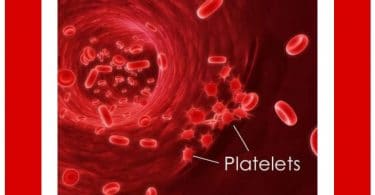One of the problems with treating animals with homeopathy is that family members can be divided. So the normal way animals come to us is after the veterinary profession has failed to produce the desired results. Luke and Diana were just such a couple. Diana was enthusiastically embracing the energetic concept of life, while Luke was happy the way life had always been and was reluctant to face the challenges of new ideas.
Things had to change when they bought two delightful puppies into their lives. Animals have a penchant for disrupting our lives, at stretching our concepts of how things should be. They are frequently our catalysts for change, inevitably for the better. But the journey can be harrowing. Both puppies are pedigree, but from different breeders. One breeder obviously cared for the dogs. The other seemed more interested in the income they provided. And it was the puppy from the latter who created havoc in Diana and Luke’s lives.
At six months, both dogs were scheduled for sterilisation (too young in my book, but that’s another story). The preliminary veterinary check discovered Shea had a heart problem. She was diagnosed with patent ductus arteriosus – or, in layman’s terms, a valve that is open in utero, but should have closed at birth.
They refused to sterilise her, saying the operation was too risky. Diana, who I was already treating, brought her to see me. This young dog was still finding her feet in showing her personality, so there was not a lot for me to hang a prescription on. Researching her condition didn’t yield much more than she was already exhibiting. She was independent and confidant, but cowered at slight reprimands. This was unsurprising, as her breeder had been rather harsh. She loved people, car rides and was active.
She did have a slight lameness on one hip and creaking joints. And she wasn’t an enthusiastic eater, which is unusual in a growing dog. She also seemed to be growing a little more slowly than her companion, but he was a boy and slightly older.
Without much to go on, I prescribed Calc phos 30c and Digitalis 30c. I did warn Diana that I hadn’t much to go on, so wasn’t overly confidant of the result. I knew she would keep me updated.
I also encouraged that Shea, and her companion, were fed a balanced, quality raw meat and bones diet, in accordance with their evolution. I instructed her on how to make it herself. I always show people how to read the animal’s body language regarding dosing, as it is the animals themselves who are the only ones who know if the remedy is right for them. Only they know what is going on inside and the effect of the treatment.
Shea accepted the remedy doses for a while, then started to turn away from them. I tried Calc phos 200c, Calc carb 30c and Adonis 6x. The latter remedy was the only one she accepted with any degree of enthusiasm, so the others were stopped.
Over time, we did go up to Adonis 30c (I didn’t have anything in between) and she did respond quite well. Her appetite had improved with the new diet, but her energy was flagging. Some days she could barely find the strength to go outside for elimination purposes. And her hip was obviously causing her pain. The thigh muscle was wasting away with lack of use. The creaking was worsening. And now the right hip was popping out. I discovered all this much later.
So she was taken back to the vet. An X-ray confirmed she had severe hip dysplasia in both hips, her sockets had not formed to hold the ball of the femur, and there appeared to be no blood flow.
Shea
The vets were in a dilemma. They felt that her condition in one so young was clearly a result of poor breeding. They felt that her only hope of survival was an operation to close the heart valve, even though the operation came with a high risk. Diana and Luke chose to do that.
Somehow Shea survived the operation. But the vets said that the heart condition was much worse than they had originally thought. They had misdiagnosed. It wasn’t patent ductus arteriosus after all. It was a congenital heart disease, often found at birth – ventricular septal defect on the right-hand side, or a hole in the heart. Could I rely on this diagnosis? They gave her just weeks to live.
A second consultation was scheduled. With the now quite obvious symptoms showing clearly, I was able to be far more accurate in my prescribing. In addition to the updated pathology, she had become very clingy, wanting to be near Diana all day.
In addition to helping her recover from such invasive surgery, I chose the following rubrics and wasn’t surprised to find Baryta carb topping the chart, along with Lycopodium. Baryta carb fitted her better and was more miasmatically correct.
generalities; GROWTH affected, disorders of (81)
generalities; FOOD and drinks; food in general; aversion to; eating; after; little, a (20)
extremities; HIPS; walking agg. (126)
mind; CLINGING (47)
mind; CONSOLATION, sympathy; desire for (57)
heart & circulation; ORGANIC complaints; heart (41)
With such clear pathology, I would have liked to put her on the LM potencies, but I only had the remedy in centesimal potencies. And, I didn’t want to delay her treatment. I started her on Baryta carb 200c once a week or as she wanted it. I chose 200c as she had clear and persistent emotional symptoms. She really loved that remedy, so I was confident of her full recovery.
She bounced back very quickly. Her energy improved to the point that she was now exhausting her companion with her lively playfulness that had no off switch. Her thigh muscle returned, something the vets said could not happen. Her hip joints stopped creaking and stopped troubling her. She can now stretch her back legs fully out behind her.
The last visit to the vet, about a month after starting her on the Baryta carb, confirmed that they didn’t need to see her again. I don’t think they believed a word Diana and Luke so enthusiastically told them. But maybe a seed was planted?
Was this brought on by poor breeding, vaccines in the family history, the poor diet she, and doubtless her mother, were fed, the harshness of the breeding environment or a combination? Who knows, but the combination certainly wasn’t conducive to good health.
Six months later Shea is going from strength to strength. She is now just a normal, energetic, healthy young dog, driving everyone mad.







I just came across this article. Can anything Homoeopathic wise be given to a Doberman who has Dilated Cardiomyopathy (DCM). Which is mostly Genetic in up to 60% of the Breed. Thank you